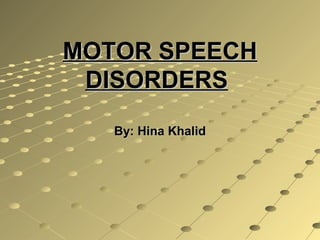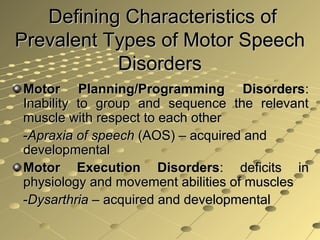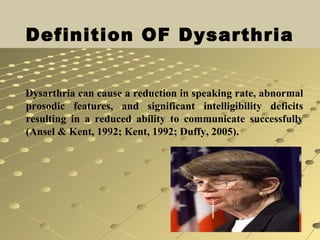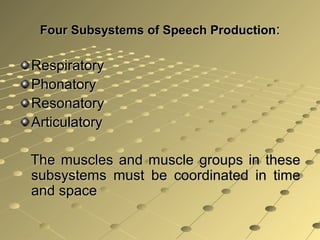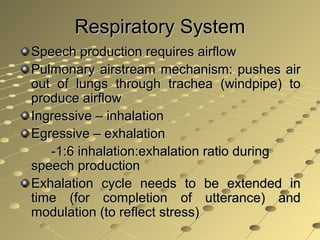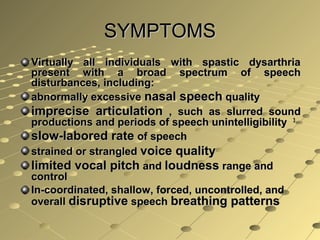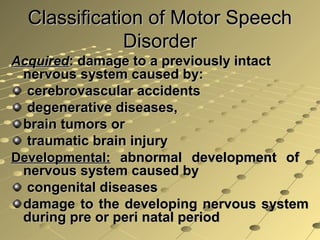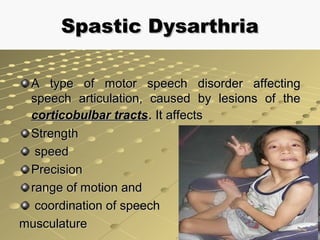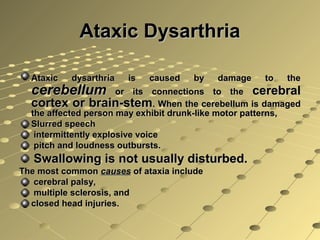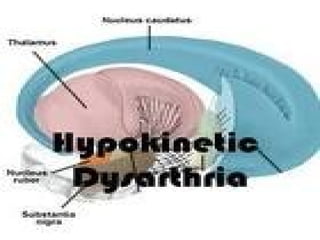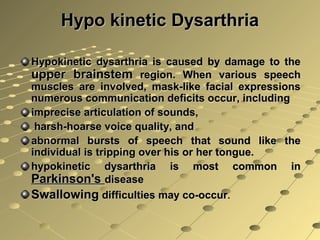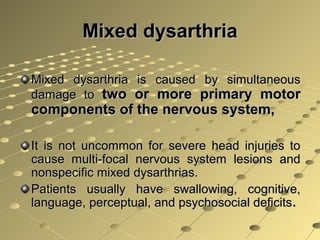Motor speech disorders result from neurological impairment in areas of the brain responsible for motor control of speech. They account for 41% of acquired communication disorders. There are two main types: dysarthria, which involves impaired motor execution of speech sounds from issues like muscle weakness or paralysis; and apraxia of speech, which involves impaired motor planning and programming of speech sounds. Dysarthria can cause reduced speech rate, abnormal prosody, and intelligibility deficits.
